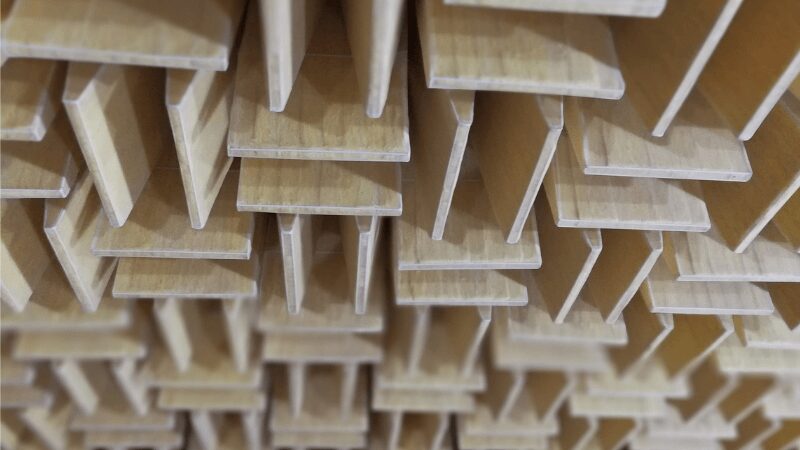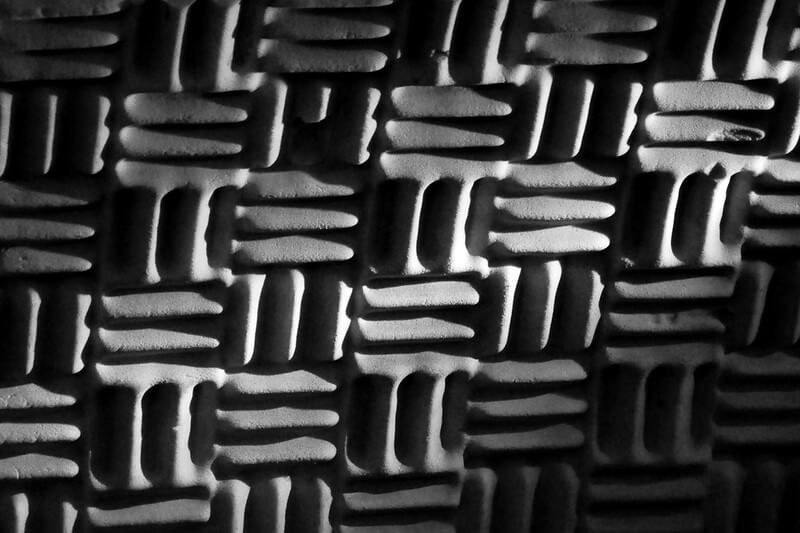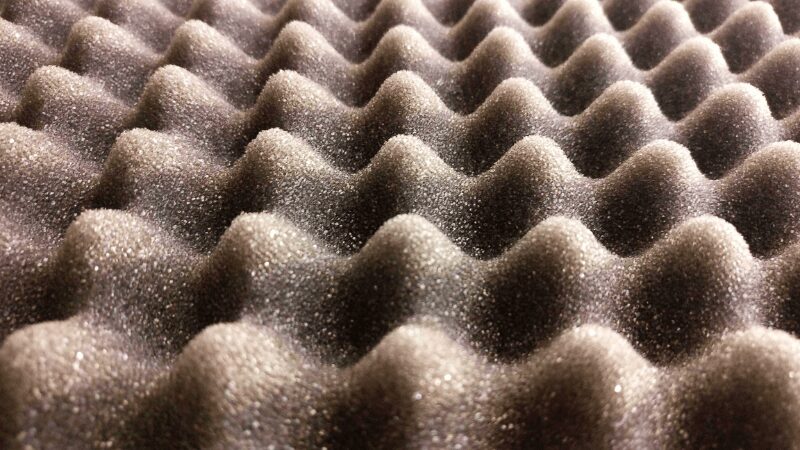As someone who appreciates peace and silence, I understand the importance of having a soundproofed space. The most effective and affordable soundproofing materials can significantly contribute to the quality of your environment, whether it’s for your home, office, or even a recording studio.
However, many people believe that soundproofing is an expensive endeavour. I will debunk this myth in this article and share the most effective and affordable soundproofing materials available. You’ll be surprised to learn that achieving a peaceful, quiet space doesn’t have to break the bank.
Soundproofing can be divided into two elements.
Sound reduction: Refers to the process of preventing external sounds from entering a space. It involves implementing measures to minimize the transmission of sound waves, thereby keeping your environment free from disturbances caused by weather conditions, outdoor conversations, and traffic noise.
Sound absorption: A process that focuses on addressing the issue of sound reflections and reverberations within a space. It involves using materials or structures that can absorb sound waves, preventing them from bouncing off surfaces and creating echoes.
The Most Effective and Affordable Soundproofing Materials
10 Most effective and affordable soundproofing materials.
- Soundproofing Foam Panels
- Mass Loaded Vinyl (MLV)
- Fiberglass Insulations
- Weatherstripping Materials
- Sound absorbent paints
- Acoustic sealant – Green glue
- Floor Underlay
- Soft Materials – Carpets and Rugs
- Layering Drywall
- Soundproof Curtains
Let us expound more on the most effective and affordable soundproofing materials.
Soundproofing Foam Panels as an effective and affordable soundproofing material

Also known as Acoustic Foam Panels are one of the most effective choices for many. Soundproofing Foam Panels features a porous structure that facilitates the passage of sound energy. The pores serve as pathways for the sound waves, which face difficulty escaping due to the narrowness of the alleyway. As a result, the sound gets trapped within the pores, generating friction that converts its energy into heat.
Acoustic Foam Panels are primarily designed to reduce or control sound reflections and reverberations in space. If you are wondering how effective Acoustic foam panels are, read more here.
Mass Loaded Vinyl (MLV)
Mass-loaded vinyl (MLV) is a versatile and pliable material with dense vinyl-based compounds. It can be conveniently applied to various surfaces. MLV is mostly composed of barium sulfate, chosen for its high-density properties and non-toxic nature.
The effectiveness of MLV stems from its complete lack of elasticity. As a result, when sound waves encounter MLV, they are absorbed almost entirely, while vibration and transmission through the material become highly improbable.
Fiberglass Insulations as an effective and affordable soundproofing material
Fiberglass is one of the best soundproofing materials with dense fibers and structure. The material helps trap and absorb sound waves, reducing their intensity and preventing them from bouncing back into a room. This helps to minimize echoes, reverberations, and unwanted noise.
Weatherstripping Materials
Weatherstripping involves using dense and sound-absorbing materials to fill the air gaps around doors and windows. These materials provide an ideal solution for sealing the gaps around doors and windows, preventing sound waves from passing through.
Sound absorbent paints
Sound absorbent paints offer an affordable and simple method to enhance soundproofing. Although these products may not have a high overall sound absorbency rating, they offer a cost-effective solution that is easy to apply. The paints can be a valuable addition to achieve comprehensive soundproofing for your room.
Acoustic sealant – Green glue.
Green Glue is a popular acoustic sealant highly regarded for its minor elasticity and its ability to convert sound wave vibrations into heat. It is easy to apply and very effective in reducing sound leakage. Acoustic sealant is very malleable, which means it will expand and contract with other building materials and won’t crack.
Floor Underlay
When using a Floor underway for soundproofing, a layer of dense and absorbent materials is laid between the subfloor and the top layer, greatly reducing sound vibrations travelling downwards and vibrating through hard floors. Floor underway tends to be more expensive as a soundproofing material.
Soft Materials – Carpets and Rugs
Incorporating soft and absorbent materials in the room is generally beneficial in soundproofing. Unlike hard materials that reflect sound waves, soft materials absorb and dampen them, reducing their travel and vibration. Maximizing soft materials can effectively decrease sound transmission and improve soundproofing in the space.
Layering Drywall
Layering drywall is one of the most used techniques in soundproofing. It involves adding multiple layers of drywall, increasing the wall’s overall mass and density, which helps improve sound insulation. These additional layers act as barriers that prevent sound waves from easily passing through the wall.
Soundproof Curtains as an effective and affordable soundproofing material
Soundproof curtains are made of thick fabric with a dense weave that is a valuable addition to enhance soundproofing efforts. They are one of the most affordable materials, making them a cost-effective option for improving sound insulation when used with other soundproofing techniques.
Factors to Consider when Selecting Effective and Affordable Soundproofing Materials
Material Density and Thickness
Dense materials are more effective at blocking sound. Consider high-density materials, such as mass-loaded vinyl (MLV) or gypsum board, to enhance soundproofing capabilities. Additionally, thicker materials provide better sound insulation. Evaluate the required thickness based on the level of sound reduction you desire.
The Type of Noise
Determine whether you are primarily dealing with airborne noise (sound transmitted through the air) or impact noise (sound caused by physical vibrations). This distinction helps select the appropriate materials. Materials with good sound-absorbing properties, such as acoustic foam panels, are suitable for airborne noise. For impact noise, resilient materials like rubber underlayment or acoustic mats can help reduce vibrations and sound transmission.
Compatibility with the existing structure
Ensure that the selected soundproofing materials are compatible with the structure or surface you intend to soundproof. Consider factors such as weight, flexibility, and ease of installation. For example, lightweight materials like acoustic ceiling tiles or resilient channels can be more practical if you soundproof a ceiling.
Moisture and Fire Resistance

Consider the environment in which the soundproofing materials will be used. Choose moisture-resistant materials like cement board or vinyl-based sound barriers in areas prone to moisture, such as bathrooms or basements. Additionally, prioritize fire-resistant materials to ensure safety. Look for materials with fire-resistant ratings, such as a Class-A Acoustic Foam from soundproofcow.
Environmental Impact: Consider the environmental impact of the materials. Look for eco-friendly options made from sustainable or recycled materials. This helps reduce the ecological footprint of your soundproofing project.
Cost Implications
Evaluate the cost-effectiveness of the materials based on your budget. Balance the cost with the desired soundproofing performance and durability of the materials. If you have good financial muscle, go for the best value for money.
6 principles for soundproofing
The following principles are another important consideration that will guide you when soundproofing your room.
1. Mass
Boosting the mass of surfaces is vital for blocking sound transmission. Adding density and thickness to walls, floors, and ceilings can impede the passage of sound waves effectively.
2. Vibrations
Damping involves reducing vibrations and resonance to minimize sound transmission. Utilizing damping materials like damping compounds or resilient mounts helps convert sound energy into heat energy, effectively reducing the impact of vibrations.
3. Decoupling
Decoupling refers to creating separation between surfaces to prevent the transfer of sound vibrations. You can interrupt sound transmission by isolating walls, floors, or ceilings. Techniques such as resilient channels, sound isolation clips, or floating floors help achieve decoupling and reduce sound transfer through structural connections.
4. Sound Absorption
Sound absorption is essential for minimizing sound reflections and reverberations within a space. Using absorptive materials like acoustic panels, fiberglass insulation, or acoustic foam helps absorb sound energy and prevent it from bouncing back, resulting in improved acoustics.
5. Isolation
Isolation involves isolating the sound source to prevent it from reaching sensitive areas. This can be achieved by constructing separate rooms, using soundproof doors and windows, or creating sound barriers.
6. Air Sealing
Proper air sealing prevents sound leakage through gaps, cracks, and openings. Applying weatherstripping, acoustic caulking, or door sweeps ensures a tight seal and minimizes sound transmission through air pathways.
Final Thoughts on the Most Effective and Affordable Soundproofing Materials
In conclusion, regarding soundproofing, it’s important to remember that every space is unique, and what works for one may not work for another. Achieving effective soundproofing on a budget is entirely possible with the right materials. Acoustic foam panels are affordable and can significantly reduce mid to high-frequency sounds. Mass-loaded vinyl material’s versatility is handy for soundproof walls, ceilings, floors, and doors.
Consulting with a soundproofing professional is beneficial if you have specific needs or large complex situations. They can assess your specific requirements, recommend suitable materials, and provide expert guidance on installation techniques.

